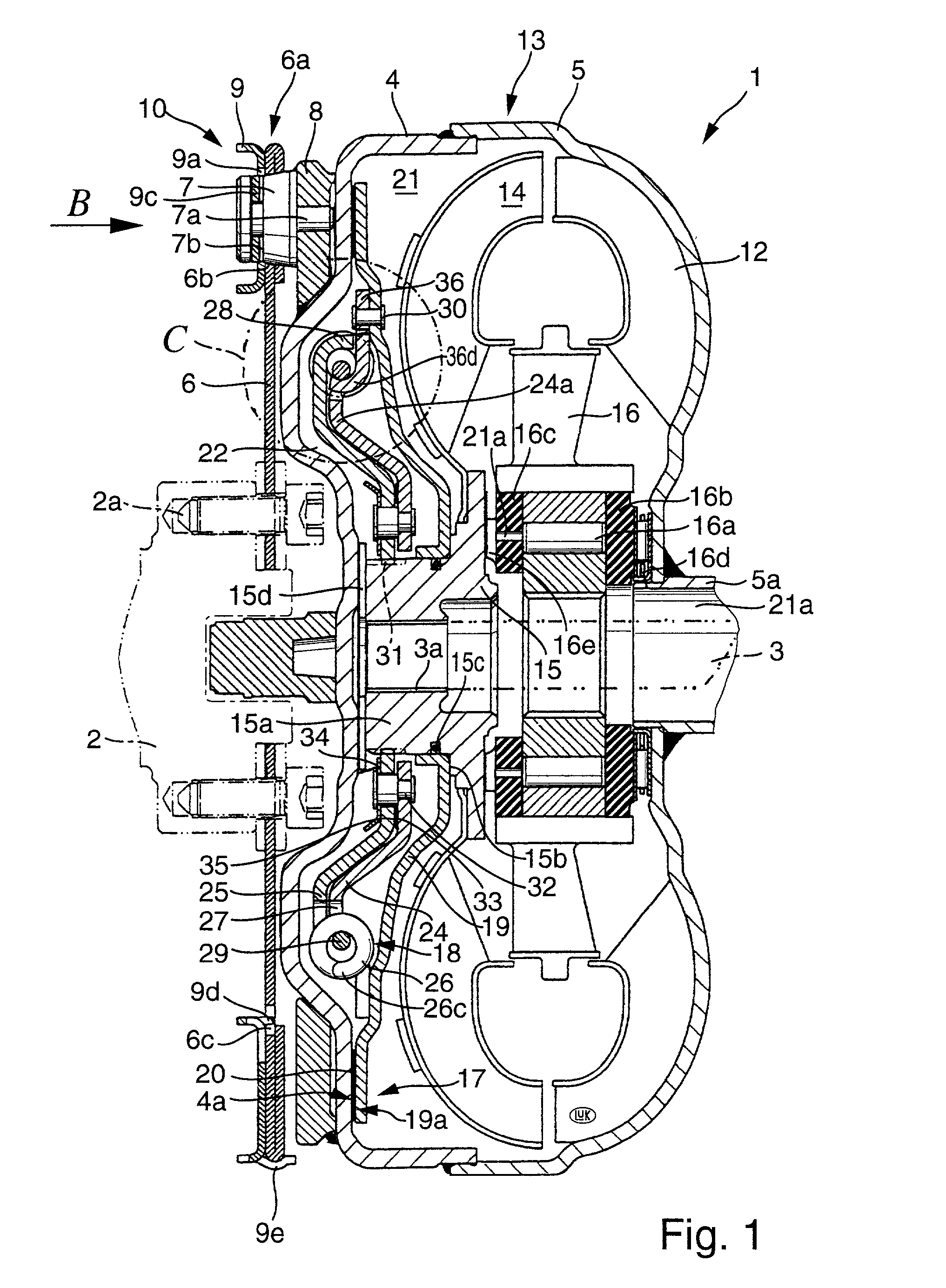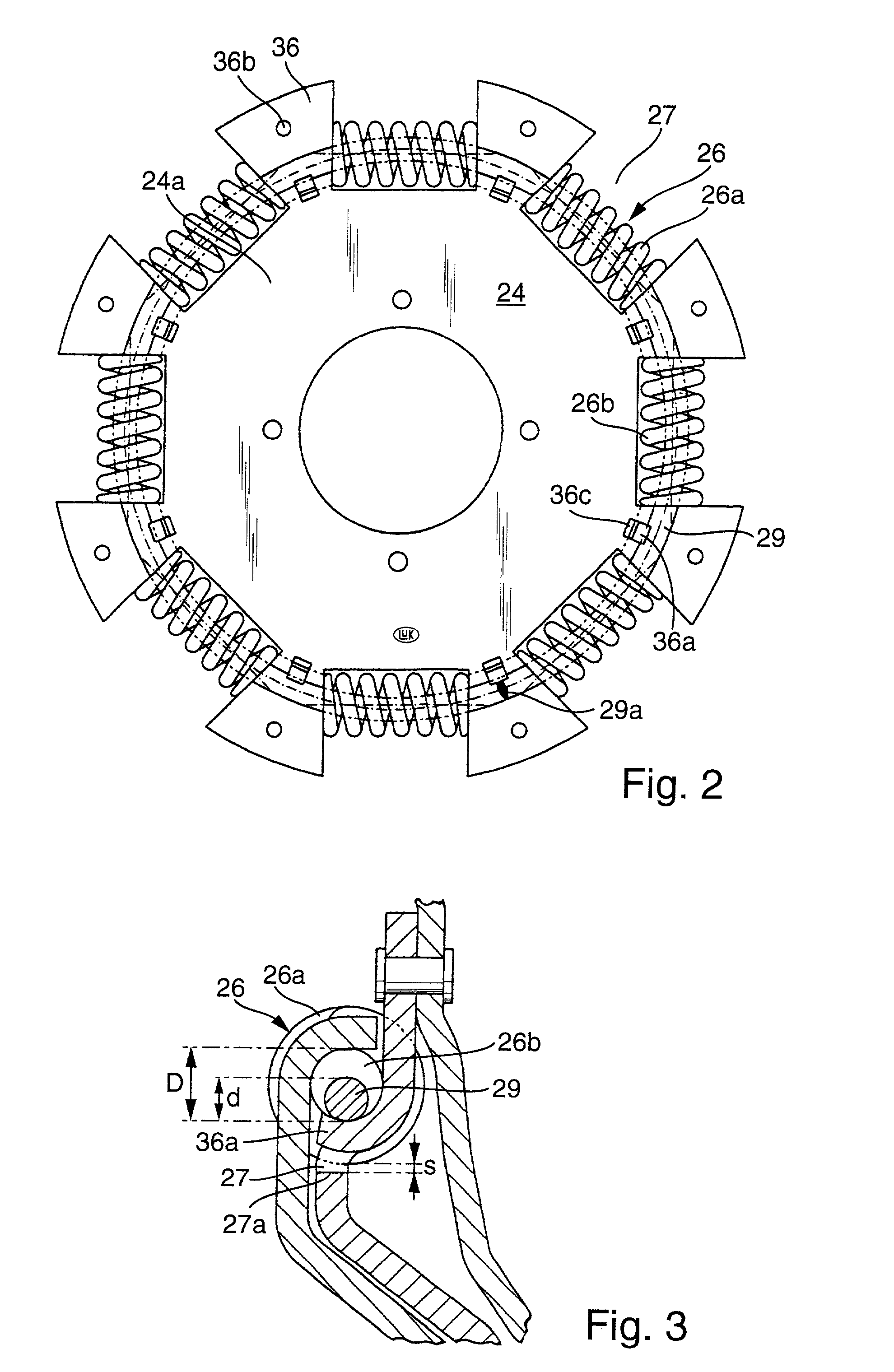Hydraulic torque converter
a technology of torque converter and hydraulic pump, which is applied in the direction of fluid coupling, gearing, rotary clutch, etc., can solve the problems of fatigue-induced breakage, excessive stress, cracking of cooperating parts, etc., and achieves the effect of useful li
- Summary
- Abstract
- Description
- Claims
- Application Information
AI Technical Summary
Benefits of technology
Problems solved by technology
Method used
Image
Examples
Embodiment Construction
[0069] The hydraulic torque converter 1 which is shown in FIG. 1 comprises a housing 13 which is affixed to the output element 2 of a prime mover, not shown. The output element 2 can constitute the crankshaft of an internal combustion engine in the power train of a motor vehicle; such power train further includes a rotary output element 3 of a change-speed transmission (not shown) which can drive the wheels or certain wheels of the motor vehicle by way of a differential in a manner well known in the art. The torque converter 1 is a fluid-operated clutch which can be utilized in lieu of a dry friction clutch to uncouple the engine in order to stop the motor vehicle in gear or to couple the engine for acceleration. Reference may be had, for example, to pages 691-693 of "Modern Automotive Technology" by James E. Duffy (1994 Edition published by The Goodheart-Willcox Company, Inc., Tinley Park, Ill.). As concerns the operation of a power train which employs a friction clutch, in lieu of...
PUM
 Login to View More
Login to View More Abstract
Description
Claims
Application Information
 Login to View More
Login to View More - R&D
- Intellectual Property
- Life Sciences
- Materials
- Tech Scout
- Unparalleled Data Quality
- Higher Quality Content
- 60% Fewer Hallucinations
Browse by: Latest US Patents, China's latest patents, Technical Efficacy Thesaurus, Application Domain, Technology Topic, Popular Technical Reports.
© 2025 PatSnap. All rights reserved.Legal|Privacy policy|Modern Slavery Act Transparency Statement|Sitemap|About US| Contact US: help@patsnap.com



